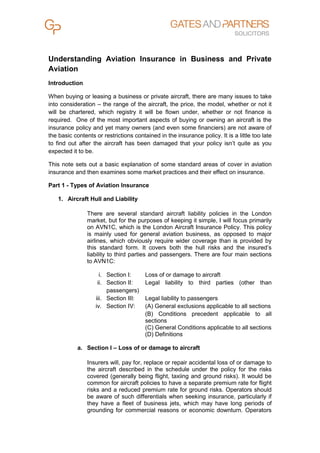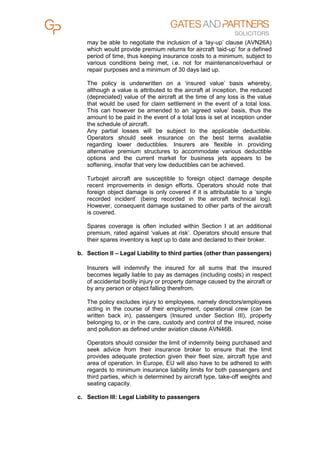This document discusses key aspects of aviation insurance for business and private aircraft. It outlines the standard sections of an aviation insurance policy, including coverage for damage to the aircraft hull, legal liability to third parties and passengers. It also examines exclusions for risks such as war, hijacking and other perils, and options for operators to purchase additional coverage to insure against these excluded risks. Maintaining adequate coverage limits and being aware of policy restrictions is important for aircraft operators and owners.







